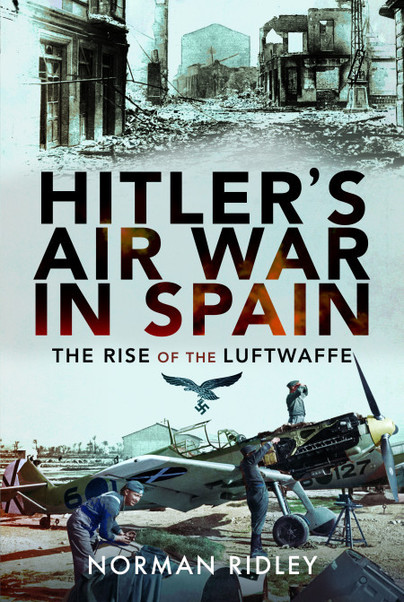Author Guest Post: Norman Ridley
Total War in the context of the Spanish Civil War

Long before the Moroccan uprising on 17 July 1936 kick-started the Spanish Civil War, political-inspired murder and ex-judicial executions were horrifically common throughout the country and these proliferated thereafter. The war itself was characterised by massive political violence, carried out by both sides on the battlefield and on city streets. The Nationalists included the right-wing monarchist Carlists, Falangist fascists and traditional conservatives who were fiercely anti-Bolshevik. Nationalist Moroccan troops, who had little emotional connection with the occupants of the Spanish mainland and who were instrumental in preventing an early government victory, together with units of the Spanish Foreign Legion whose reputation for extreme violence and lack of restraint was legendary, operated almost without restraint by observing none of the terms of the 1929 Geneva Convention on the treatment of prisoners of war.
Franco’s army also included Moorish troops from Morocco. The rebels portrayed the fighting as a ‘crusade,’ a ‘holy war,’ against a ‘Judeo-Masonic-Bolshevist’ conspiracy. Anti-Semitic propaganda, including the notorious fictional work, The Protocols of the Elders of Zion, circulated throughout the Nationalist-held territories. The Nationalists also tried to combat Basque and Catalan nationalism, which was perceived as a threat to national unity. The Republican forces (Loyalists) included a broad spectrum of political positions from moderate democrats, liberals, and socialists to more radical Leftists, such as Communists and Anarchists and on occasions, this coalition collapsed into internecine violence.
The Spanish Civil War proved to be a breeding ground for mass atrocities, carried out by belligerents eager to eradicate their ideological opponents. About 500,000 people lost their lives in the conflict. Of these, about 200,000 died as the result of systematic killings, mob violence, torture, or other brutalities. Anarchists and other radicals often took out their anger against the Catholic clergy, whom they saw as an obstacle to major reform. Almost 7,000 Catholic priests, monks, and nuns were killed, primarily in the first months of the revolt. By May 1937, most of the mass killings of priests by Leftist radicals subsided. Francoist forces too killed liberal-minded or Loyalist clergy.
The Nationalists waged a brutal war against the Republic’s supporters. Republican women were raped or were publicly humiliated by having their heads shaved. By 1940, more than 500,000 individuals were rounded up and sent to about 60 concentration camps. Large numbers of prisoners were conscripted for forced labour.
In conventional civil wars, violence against civilians and combatants takes place in clearly delineated spaces. Combatants are generally young men, voluntarily or forcibly recruited by armed groups, who engage in combat primarily on a frontline. Deaths occur during or as the result of battles while civilians are generally isolated from the battlefield and their everyday life tends to be independent from the war events. Civilian deaths are usually due to marauding armed groups or aerial/naval bombardments.
In irregular civil wars, battlefield and non-battlefield areas are not spatially distanced and there is a much greater mixing of civilians and combatants. In such cases the instances of violence behind the frontlines perpetrated direct against civilians is increased as armed groups are likely to devote resources to eliminating strong supporters of their opponent. These armed groups may perpetrate direct violence against their victims who might have been denounced by ‘neighbours’. This is quite different from death through indirect actions such as indiscriminate bombing of a city.
Analysis of data from the Spanish Civil war shows us that the closer prewar factions are in strength, the higher the levels of violence perpetrated by the armed group against civilians deemed to be a threat and this level of violence will be reflected in reciprocal actions by the other side against civilians.
During the war itself, 100,000 individuals were executed by the Nationalists and after the war ended in the Spring of 1939, another 50,000 were killed. Martial law remained in place in Franco’s Spain until 1948, and former Republicans were subjected to various forms of discrimination and punishment. The fighting and persecution resulted in several million Spaniards being displaced. Many fled areas of violence for safe refuge elsewhere. Only a few countries, such as Mexico and the Dominican Republic, opened their doors to Spanish refugees. When the Spanish Civil War ended in 1939, with Franco’s victory, some 500,000 Spanish Republicans escaped to France, where many were placed in internment camps in the south, such as Gurs, St. Cyprien, and Les Milles. Following the German occupation of France in Spring 1940, Nazi authorities conscripted Spanish Republicans for forced labour and deported more than 30,000 to German concentration camps.

Order your copy here.

